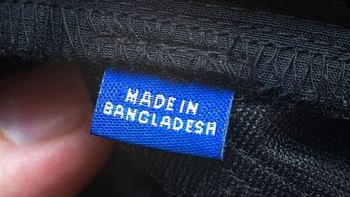Leather, leather footwear sales in slow lane at home, abroad

The leather and leather goods sector in Bangladesh is witnessing slow sales both at home and abroad amid ongoing global economic crises and inflationary pressure, according to industry people.
As such, manufacturers are struggling to even recover operational costs, let alone make a profit, they said.
Exports of leather footwear fell 34.75 percent year-on-year to fetch $214.15 million in the July-November period of the current fiscal year, showed data of the Export Promotion Bureau.
On the other hand, exports of finished and semi-finished leather edged up by just 0.56 percent to earn $55.88 million.
The situation is similarly bleak in the domestic market where sales of leather footwear have reduced by about 20 percent from Tk 16,000 crore suffered by a drop in people's disposable income.
"Both domestic sales and exports are dull due to the ongoing global economic situation and inflationary pressure, which is preventing people from spending money on footwear," said Dilip Kajuri, chief financial officer of Apex Footwear Limited.
"The leather and leather goods sector is passing a critical period, which cannot be overcome until there is the recovery in the European market," he said while pointing out that it will take at least six months for the situation to stabilise.
"Now, we are just surviving to meet operational costs as we cannot gain business."

Kajuri also said it is part of business for industries to come up with strategies to retain workers in times of crisis such as this.
"So, saving the workers' jobs and continuing factory operations during the current difficult period is the main target for now."
A top official of Jennys Shoes, a footwear exporter, said the sector is witnessing a tight situation as business at home and abroad is in the slow lane.
"The economies of export destinations are not in a good position, for which export orders are lower than the previous year."
The official believes the situation will not change until the global economy recovers.
He also said the cost of production has increased due to the depreciation of the local currency, but the price of export products has not increased.
"So, the sector is facing a tough situation."
Arfanul Hoque, head of retail at Bata Shoe Company (Bangladesh), said overall footwear sales have fallen 20 percent due to the ongoing inflationary pressure and appreciation of the US Dollar.
"In this situation, almost all brands are offering discounts of up to 50 percent to encourage customers and cover the operational cost."
According to him, the overall organised and non-organised annual turnover for footwear in the country is around Tk 16,000 crore.
Hoque also said the cost of production has increased by around 30 percent over the past one and a half years due to the higher US dollar price.
Footwear manufacturers need to import all the required raw materials except leather. At least 152 types of raw materials are required by footwear industries, making them nearly 100 percent import-dependent.
Mohammed Mizanur Rahman, a professor and director of the Institute of Leather Engineering and Technology of Dhaka University, said the local tannery industry's non-compliance with global production practices is a major reason for the transitional period of the leather and leather goods sector.
He said Bangladesh can cater to less than 0.5 percent of the global leather market worth $300 billion even though the country has significant potential to increase exports.
Bangladesh accounts for about 3.5 percent of the total rawhide produced globally.
"We need to ensure compliance with global standards by upgrading the central effluent treatment plant (CETP) at the tannery industrial estate in Savar," Rahman said.
Besides, private firms should be encouraged to set up their own ETPs in order to reduce the pressure on the CETP.
"There is a need for solid waste management facilities in areas adjacent to tannery and footwear factories."
Rahman also pointed out that leather processing requires the use of various chemicals, so the industry needs to address the issue of environmental pollution to increase value addition.
"By doing so, factories can gain Leather Working Group (LWG) certification, which would attract renowned buyers from the US, the EU and Canada."
"As such, the price per square foot of finished leather could be increased to $1.5 from $0.80 at present."
"Then, manufacturers will not face any problem in paying double or triple the salaries to their workers while the sector will achieve its export target of $5 billion easily," he added.

 For all latest news, follow The Daily Star's Google News channel.
For all latest news, follow The Daily Star's Google News channel. 



Comments